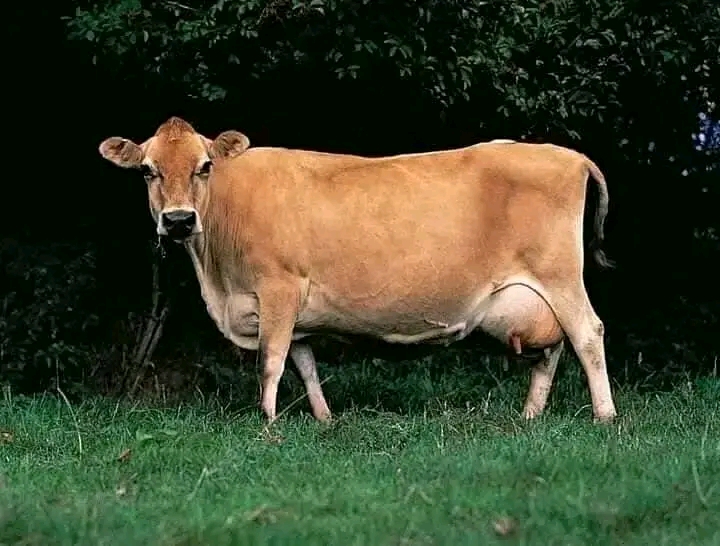LESSON 3
Dairy Breeds
Jersey Dairy Cow
Distinctive appearance:Jerseys are known for their light brown colour, which can range from a creamy fawn to a dark mulberry. They also have black switches (long hair on the end of the tail), black hooves, and a lighter band around their muzzles.
Small stature:Jerseys are one of the smallest dairy breeds, with cows weighing between 350 and 400 kg and bulls weighing between 600 and 700 kg. Their compact size makes them well-suited for smaller farms and pastures.
High milk production:Jerseys are known for their efficient milk production, producing up to 10 times their body weight in milk per lactation. Their milk is also high in butterfat, with an average of 4.5%, making it ideal for making cheese, butter, and ice cream.
Docile temperament: Jerseys are generally calm and docile animals, making them easy to handle and manage. They are also known for their good mothering instincts.
Adaptability:Jerseys are adaptable to a variety of climates and can thrive in both hot and cold conditions. They are also relatively disease-resistant.
Long lifespan:Jerseys have a longer lifespan than many other dairy breeds, with cows averaging 12 to 15 years of production.
Efficiency:Jerseys are one of the most efficient dairy breeds, converting feed into milk more effectively than other breeds. This makes them a cost-effective option for dairy farmers.
Nutritional value: Jersey milk is a good source of protein, calcium, and vitamin D. It also contains conjugated linoleic acid (CLA), a fatty acid that has been linked to various health benefits.
Versatility:Jersey milk can be used to make a variety of products, including cheese, butter, ice cream, yogurt.
Sustainability:Jersey cows are a sustainable option for dairy production, as they have a low environmental impact. They are also well-suited for organic farming practices.
For more 0790390524.
